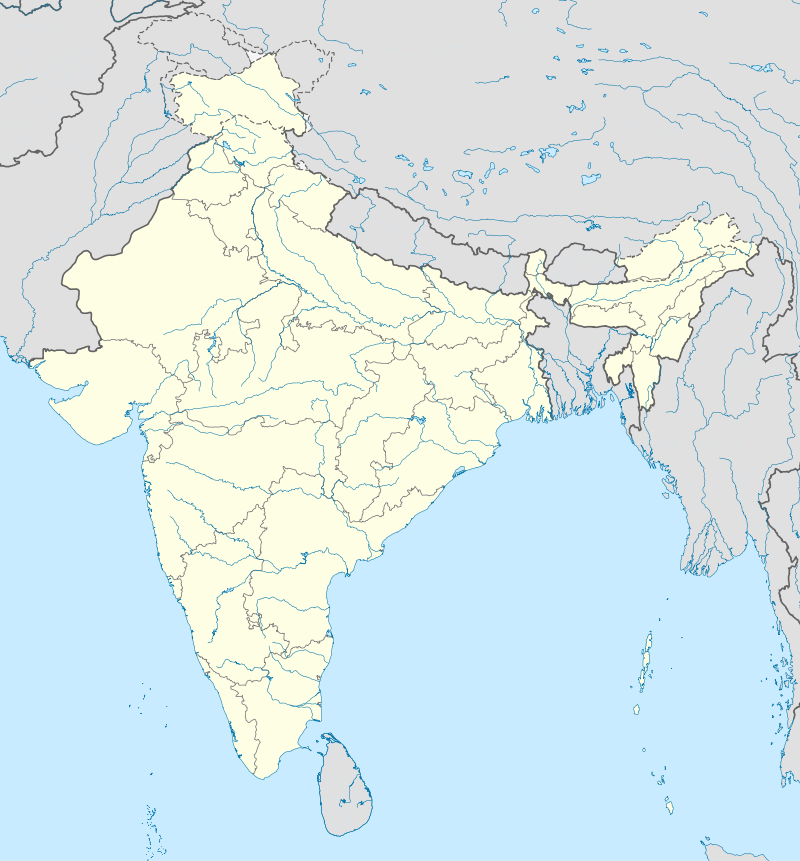- Dutch India
-
 Factory in Hugli-Chuchura, Dutch Bengal. Hendrik van Schuylenburgh, 1665.
Factory in Hugli-Chuchura, Dutch Bengal. Hendrik van Schuylenburgh, 1665.
Dutch India is a term used to refer to the settlements and trading posts of the Dutch East India Company on the Indian subcontinent. It is only used as a geographical definition, as there has never been a political authority ruling all Dutch India. Instead, Dutch India was divided in the governorates Dutch Ceylon and Dutch Coromandel, the commandment Dutch Malabar, and the directorates Dutch Bengal and Dutch Suratte.
The term should not be confused with the term Dutch Indies, which refers to the Dutch East Indies (present-day Indonesia) and the Dutch West Indies (present-day Suriname and the former Netherlands Antilles).
Contents
History
Dutch presence on the Indian subcontinent lasted from 1605 and 1825. Merchants of the Dutch East India Company first established themselves in Dutch Coromandel, notably Pulicat, as they were looking for textiles to exchange with the spices they traded in the East Indies.[1] Dutch Suratte and Dutch Bengal succeeded in 1616 and 1627 respectively.[2][3] After the Dutch conquered Ceylon from the Portuguese in 1656, they took the Portuguese forts on the Malabar coast five years later as well, to secure Ceylon from Portuguese invasion.[4][5]
Apart from textiles, the items traded in Dutch India include precious stones, indigo, and silk across India, saltpeter and opium in Dutch Bengal, and pepper in Dutch Malabar. Indian slaves were imported on the Spice Islands and in the Cape Colony.
In the second half of the eighteenth century the Dutch lost their influence more and more. The Kew Letters relinquished all Dutch colonies to the British, to prevent them from being overrun by the French. Although Dutch Coromandel and Dutch Bengal were restored to Dutch rule by vitue of the Anglo-Dutch Treaty of 1814, they returned to British rule owing to the provisions of the Anglo-Dutch Treaty of 1824. In 1825, the Dutch had lost their last trading post in India.
 Gold pagoda with an image of Lord Venkateswara, a form of the Hindu god Vishnu, issued at the Dutch mint at Pulicat, c. 17th or 18th century
Gold pagoda with an image of Lord Venkateswara, a form of the Hindu god Vishnu, issued at the Dutch mint at Pulicat, c. 17th or 18th century
Coinage
During the days when the Dutch were commercially active in India, they operated several mints, at Cochin, Masulipattam, Nagapatam (or Negapatam), Pondicherry (for the five years 1693-98 when the Dutch had gained control from the French), and Pulicat. The coins were all modeled on the local coinages.
Map
Dutch Ceylon Dutch Coromandel Dutch Malabar Dutch Suratte Dutch Bengal Dutch Myanmar See also
 The capture of Cochin from the Portuguese by Rijckloff van Goens in 1663. Atlas van der Hagen, 1682.
The capture of Cochin from the Portuguese by Rijckloff van Goens in 1663. Atlas van der Hagen, 1682.
External Links
Notes
References
Dutch Empire Colonies and trading posts of the Dutch East India Company (1602-1798) GovernoratesAmbon · Banda · Batavia · Cape Colony · Ceylon · Coromandel · Formosa · Northeast coast of Java · Makassar · Malacca · MoluccasDirectoratesCommandmentsResidenciesSettlements with an opperhoofdColonies and trading posts of the Dutch West India Company (1621-1792) Colonies in the AmericasAcadia · Berbice† · Cayenne · Curaçao and Dependencies · Demerara · Essequibo · Brazil · New Netherland · Pomeroon · Sint Eustatius and Dependencies · Suriname‡ · Tobago · Virgin IslandsTrading posts in Africa† Governed by the Society of Berbice · ‡ Governed by the Society of Suriname Settlements of the Noordsche Compagnie (1614-1642) SettlementsColonies of the Kingdom of the Netherlands (1815-1962) Until 1825Until 1853Until 1872Until 1945Until 1954Until 1962† Became constituent countries of the Kingdom of the Netherlands; Suriname gained full independence in 1975, Curaçao and Dependencies was renamed to the Netherlands Antilles, which was eventually dissolved in 2010. Kingdom of the Netherlands (1954-Present) Constituent countriesPublic bodies of the NetherlandsCategories:- Dutch India
- European colonisation in Asia
Wikimedia Foundation. 2010.


